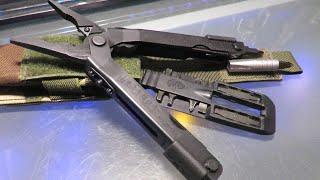
There are several different types of concealed carry knives available. They are efficient and easy to use. You have a choice of different designs. The knife's overall layout was designed to make it easy to conceal and carry. Regardless of the type of knife you choose, you should always know the laws in your state before carrying one.
Concealed carry knives are prohibited by law
The laws surrounding concealed carry knives vary from state to state. Many times, concealed carry knives laws only apply to federal property owners or people who cross state borders. Other states allow concealed carry of knives only in specific locations such as private homes. However, in New York, the knife law is incredibly restrictive for many individuals.
However, not all states prohibit pocketknives. Nevada is one example. Knives are not allowed for felonies and restraining orders holders. New Jersey has its own rules regarding knife ownership. Utah and Oregon also prohibit felons from possessing knives. Additionally, Wisconsin and Wyoming don't allow carry knives for some people based on their criminal history or mental state.

Types and types of concealed carry knives
There are many types of concealed carry knives available. Each knife has a different purpose and benefits. Some knives are intended for self-defense while others are used for combat. There are also knives for everyday usage. You should consider your state's legal status when purchasing a knife. The laws in your state should dictate the type and length of the blade.
Certain knives are not allowed. Michigan and other states have their own laws concerning knives. Some knives, such as hunting knives, are allowed, while others are prohibited. In addition, certain knives aren't allowed to be carried on the street. A dirk and stiletto are prohibited if you try to carry a knife on the streets of New York City. Other types of knives, like non-folding, double-edged ballistic knives, and double-edged knifes, are also prohibited.
Legality of conceal carry knives in various states
If you're planning to carry a concealed carry knife in the United States, you'll need to know the legality of pocketknives in each state. Knives can be considered dangerous weapons in certain states. This could result in criminal prosecution. There are exceptions to this rule. Wyoming doesn't consider knives shorter than 3 inches dangerous weapons. Pocketknives can also be carried openly in Washington. This can lead to uncomfortable situations and even possible legal problems.
Knife laws in Tennessee have been complicated and confusing in the past, but they have become much more lenient in recent years. There are no per se laws that restrict the ownership and transportation of pocketknives in Tennessee. Tennessee is the most relaxed state in blade laws.

Techniques for concealing a knife
The preparation and planning required to carry a knife as a self-defense tool requires careful thought. You must also be committed to learning and making good decisions. The situation dictates the right technique. You can carry the knife horizontally or vertically. For horizontal carry, position the knife so that the handle faces you.
You should check whether concealed carry is permitted in your area. Fixed-blade EDCs should not exceed three inches in length. For concealment, pocket knives and Swiss army knives work well.
FAQ
What is the most effective self-defense technique?
The best way to defend yourself from an attack is to avoid it altogether. When you are attacked, it is best to flee as fast and as possible. This will give your time to formulate a better defense plan.
If you are unable or unwilling to flee, learn any defense techniques you have. These include punches or kicks as well as knees. You can also grab your attacker’s arms or legs to stop him attacking you further.
You can fight back with any means you have available if none of these options are effective. Your bare hands are the best weapon. But if your hands aren't well-trained, you may need to learn another form of self defense.
How much does a stun gun cost?
A stun gun's price can vary depending on its model.
Most models include two batteries. The battery lasts approximately three to four months.
How do beginners do self-defense?
Not only are experts trained in self-defense, but so is everyone else. It is also important to be able defend yourself alone. To protect yourself against an attack, you should know the basics.
Start with simple moves such as punching, kicks, and kneeing. Next, you can learn more advanced moves like grappling as well as joint locks.
It's always a good idea to practice the same things you will encounter in real life. To learn how to kick someone you need to practice on something soft, such as a pillow.
So you don't get hurt while practicing. Do not hit anything too hard. You might cause injury.
How can I learn self-defense at home?
There are many things you can do to improve your self protection skills. Martial arts is the best place to begin. Martial Arts teach you how not to use weapons. They build confidence and improve fitness. There are many schools that offer classes online. It's important to know what type of martial art you want to learn. Do you want to learn Kung Fu? Or perhaps Karate? Both styles are great choices, even though they may look very different. They are largely different because of the type of fighting used. Kung fu, on the other hand, is focused on grappling techniques and kicking. Karate, however, focuses on striking techniques.
It is important to check whether they offer multiple forms of instruction when selecting a school. This refers to the various martial arts styles taught within a single school. Some schools focus on just one form of martial art such as Tai Chi, while others may offer instruction in several different types of martial arts. Make sure you only study at a well-respected school, regardless of what your goals are. Ask around to see if anyone you know has studied there and asked questions regarding the instructors' background and training history. Visit the school to speak with someone who has taught there if possible.
Statistics
- Most likely, you'll get tapped out by 90% of the people in your first 3-5 months. (mmaclan.com)
- Kung Fu alone has 400 unique martial art styles – and whilst you likely won't be able to find a school for each form, many other martial arts are completely different altogether. (budodragon.com)
- Saying this, Self defense 101 would be the importance of situational awareness, which can never be replaced by the finest of martial arts, because it is this that would help you to avoid any likely attacks in the first place. (worldofselfdefense.com)
- Most likely, the person will want some kind of boxing match, so if you can out-box them, this would be 100% ideal for survival. (budodragon.com)
External Links
How To
How to use Kubotans for self defense
Kubotan, or small sticks, are used as weapons by Okinawan masters in martial arts. They were originally made of bamboo, but have been replaced with metal or plastic.
They typically measure between 5cm and 2cm.
The Kubotan can be used to strike at the eyes, nose, or mouth of an opponent. It is also effective against other body parts such as elbows and knees.
Women often use Kubotan because they are easy to carry, lightweight, and can easily be concealed when not needed.
Effectively using a Kubotan requires that you know where the stick should be placed to hit the right spot.
It is important to practice with the Kubotan before you go out in order to hit the right spots.
The following steps show you how to use a Kubotan in self-defense:
-
Face the attacker
-
Hold the Kubotan tightly between your index and thumb.
-
Raise the arm holding the Kubotan above your head.
-
Swing the Kubotan downward towards the attacker's face.
-
You can strike the attacker in the nose, eye, and mouth.
-
You should be able to see the impact of the Kubotan as it strikes the target.
-
Keep swinging the Kubotan up and down until you hear a "thwack".
-
Lower the Kubotan and step back.
-
You can continue fighting by repeating Steps 1-7.